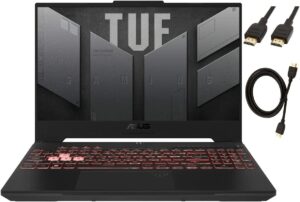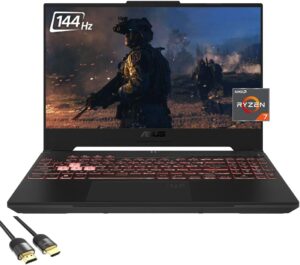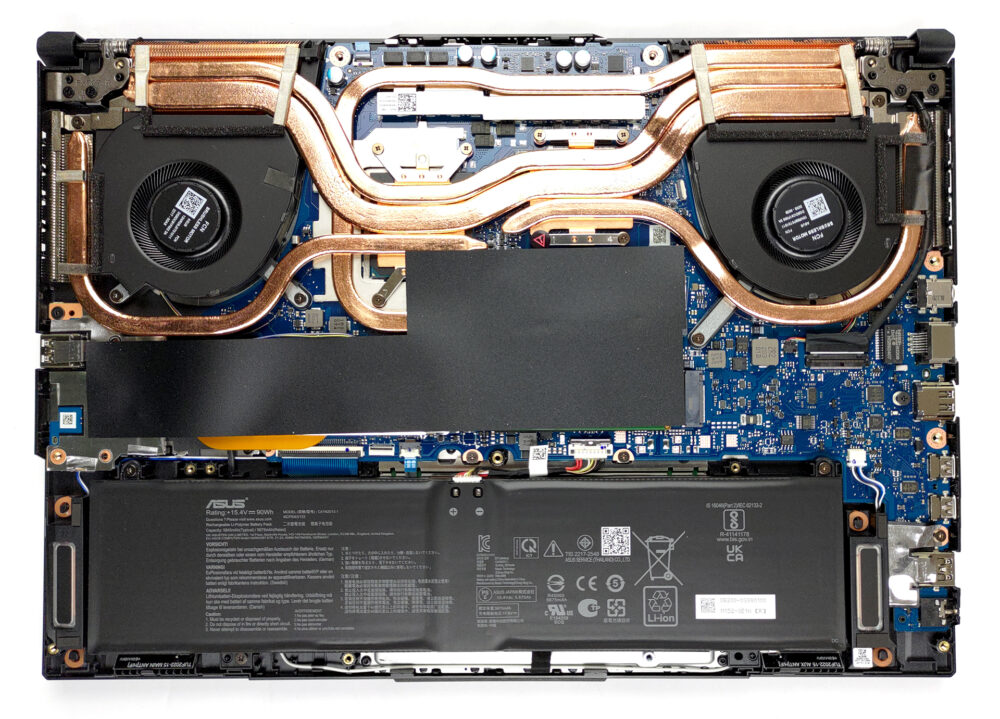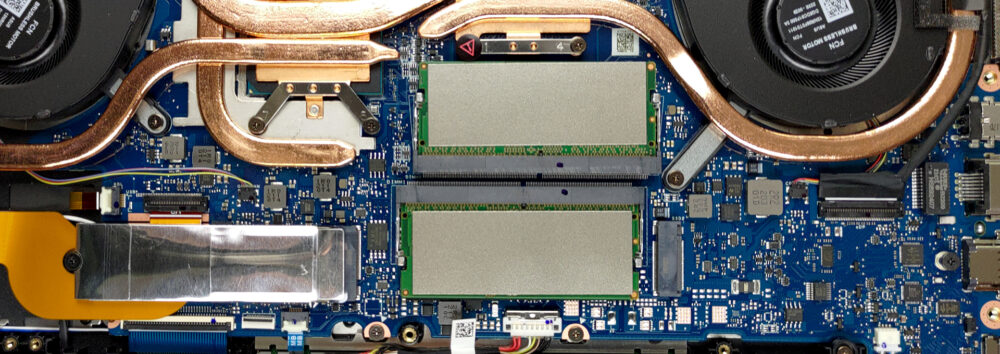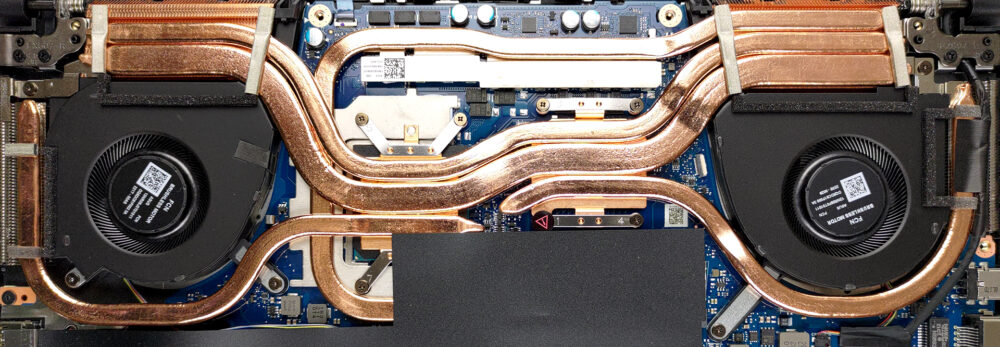How to open ASUS TUF Gaming A15 FA507 – disassembly and upgrade options
Step 1: Accessing the Internal Components
- Ensure the ASUS TUF Gaming A15 FA507 is powered off and placed on a soft, clean surface to prevent scratches or damage.
- Remove the 12 Phillips-head screws from the bottom of the laptop. Note that the screw in the bottom right corner remains attached, creating a slight gap for the prying process to begin.
- Use a plastic tool to gently pry the bottom panel off, starting from the gap created by the attached screw.
Hint: Be cautious during this process to avoid damaging the internal clips or the laptop casing.
Step 2: Removing the Battery
- Disconnect the battery by unplugging its connector from the motherboard.
- Remove all three Phillips-head screws securing the 90Wh battery pack to the laptop’s chassis, then carefully lift the battery away from the device.
Caution: Handle the battery and its connector with care to avoid any damage.
More info: The 90Wh battery offers impressive battery life, lasting more than 14 hours of web browsing or about 11 hours of video playback.
Memory Upgrade
- Remove the insulation strip to reveal the SODIMM slots.
- Upgrade the memory by installing DDR5 RAM modules into the available slots for enhanced performance.
Hint: Maximizing the RAM can significantly enhance the laptop’s multitasking capabilities and overall performance.
You can buy DDR5 RAM modules here: Buy from Amazon.com (#CommissionsEarned)
Storage Upgrade
- Identify the two M.2 PCIe x4 slots that support Gen 4 SSDs for high-speed storage upgrades.
- Consider installing new Gen 4 NVMe SSDs to increase the laptop’s storage capacity and speed.
Hint: Don’t forget to check out our Top M.2 SSDs Performance Rankings to choose and purchase a new drive when needed.
You can buy Gen 4 M.2 SSD modules here: Buy from Amazon.com (#CommissionsEarned)
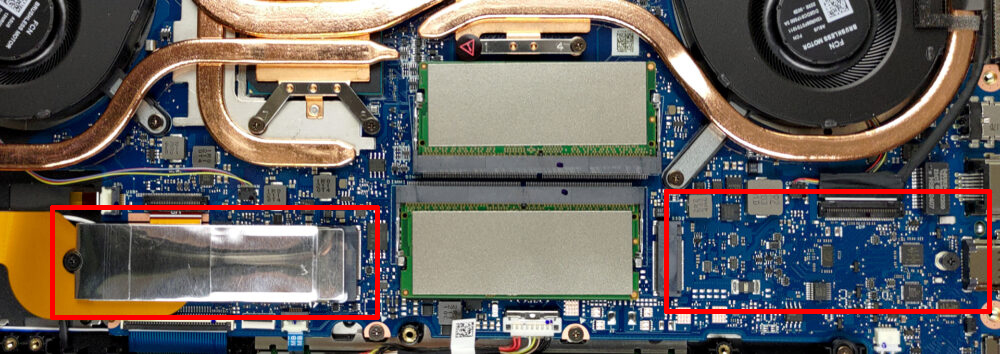
Examining the Cooling System
Inspect the cooling system, which includes two shared heat pipes between the CPU and GPU, an additional dedicated heat pipe for each, and a fifth one focusing on the graphics memory and VRMs, designed to efficiently manage the thermal output of the device.
